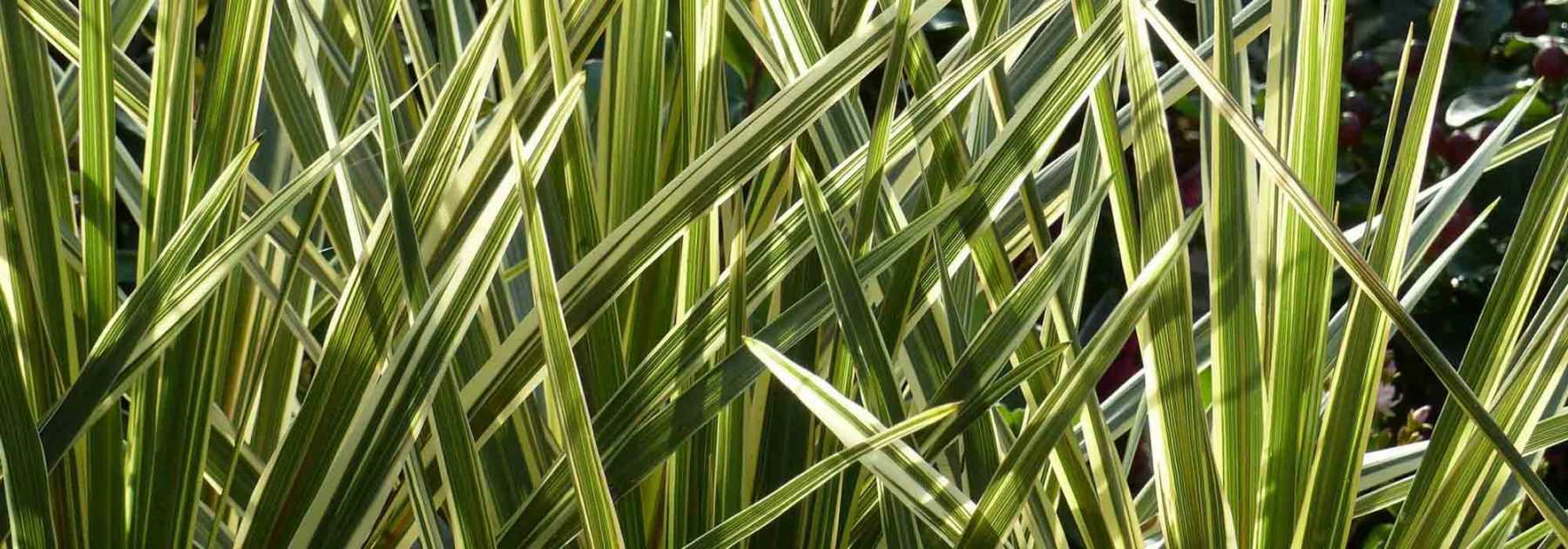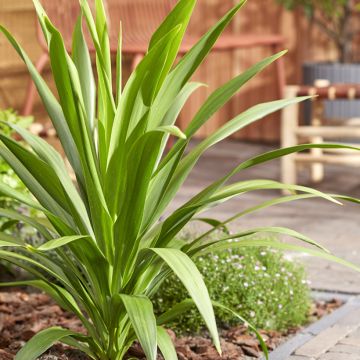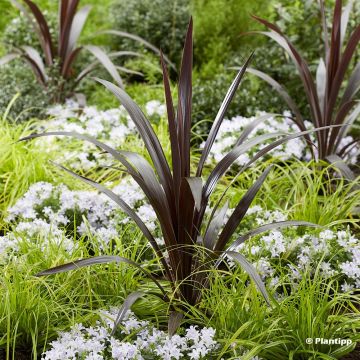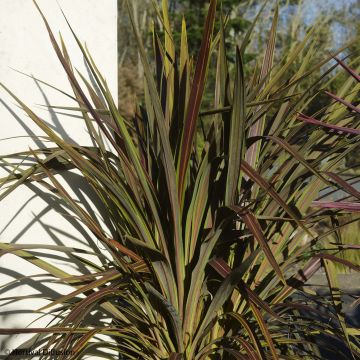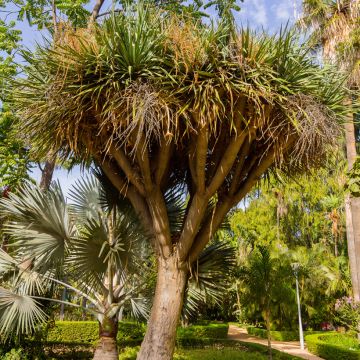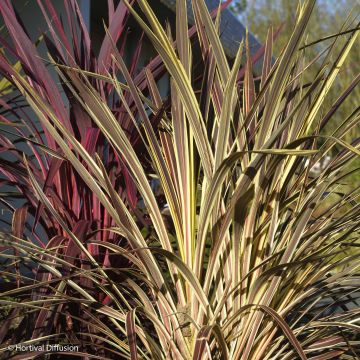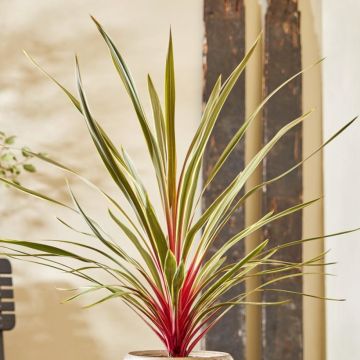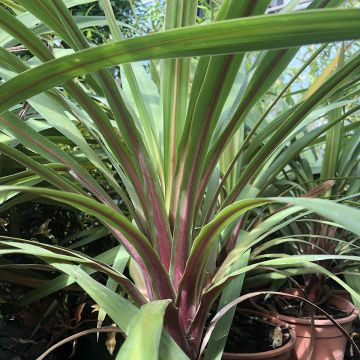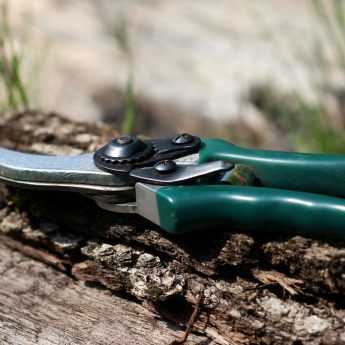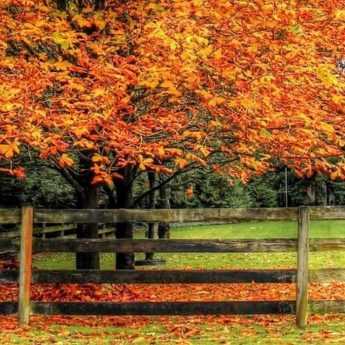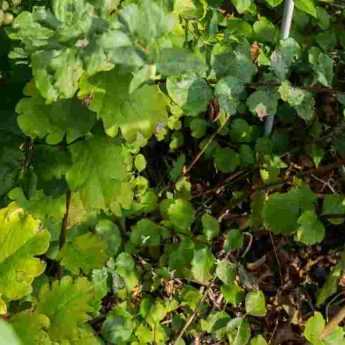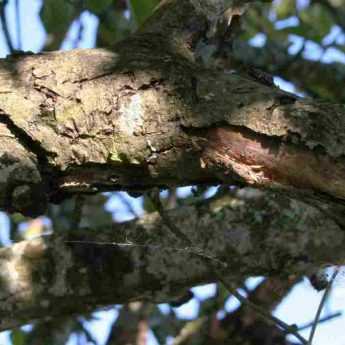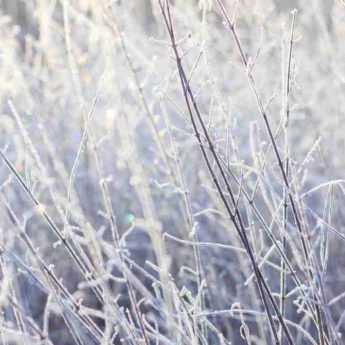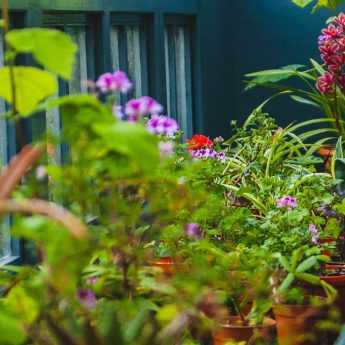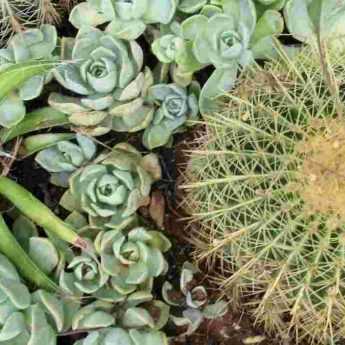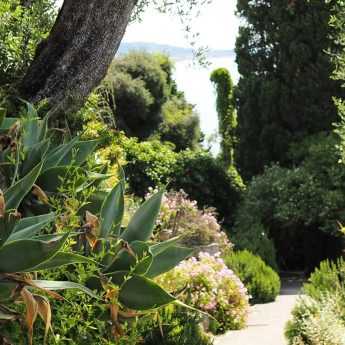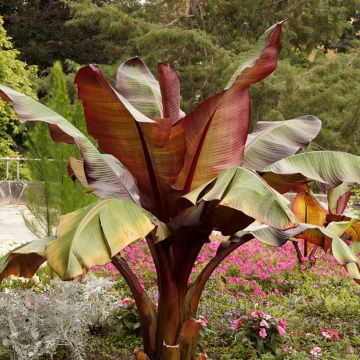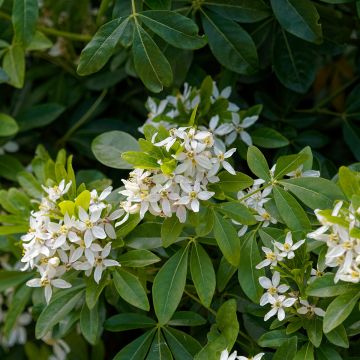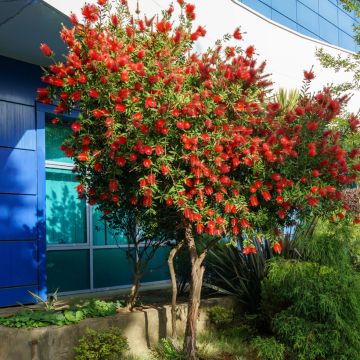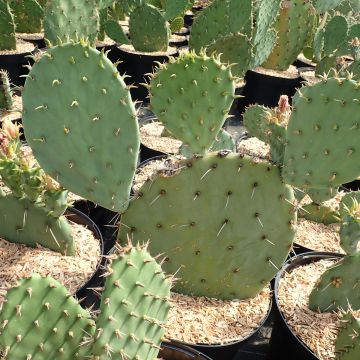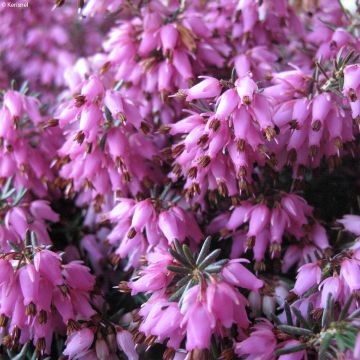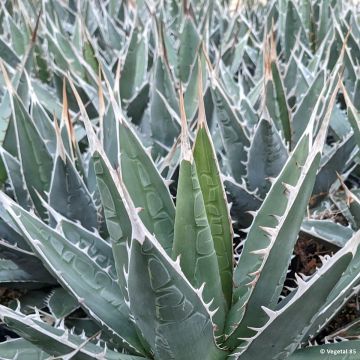

Decorative trio of Cordyline Black Knight, Electric Flash, Peko in one pot
Decorative trio of Cordyline Black Knight, Electric Flash, Peko in one pot
Cordyline Black Knight, Electric Flash, Peko
Cordyline, Faux-Dracaena, Faux-Dragonnier
Home or relay delivery (depending on size and destination)
Schedule delivery date,
and select date in basket
This plant carries a 24 months recovery warranty
More information
We guarantee the quality of our plants for a full growing cycle, and will replace at our expense any plant that fails to recover under normal climatic and planting conditions.
Does this plant fit my garden?
Set up your Plantfit profile →
Description
The decorative Cordyline trio pot Black Knight/Electric Flash/Peko is a combination of three False Dracaenas in the same container. This "ready-to-use" composition instantly enhances a terrace, patio, or conservatory, delivering an immediate visual impact. The potted arrangement boasts an exotic architectural style, and the multiple colours of this mix also create a striking visual focal point.
The Cordyline genus was recently reclassified in the Asparagaceae family (the same as asparagus), after being part of the Agavaceae and several other botanical families through successive classifications. There are around fifteen species, mostly from tropical and subtropical regions, but some from New Zealand exhibit better hardiness. This is the case for C. australis and C. banksii, both endemic to this country, and whose horticultural varieties make up this set.
The composition combines three horticultural varieties, each with ornamental appeal. Cordyline australis 'Black Knight' has captivating, glossy, deep purple foliage. Its silhouette is slender, with long leaves gracefully arching downward from the crown. In summer, it produces large, 60 cm to 1 m panicles of small, delicately scented white flowers (1 cm) followed by bluish berries. It grows to around 2 m tall, developing a small trunk over time. Cordyline banksii 'Electric Flash' is a fast-growing Australian horticultural variety that does not form a trunk and remains dense, reaching only 1.50 m in height. Its long leaves blend bronze-purple, creamy yellow, and light olive green. White flower spikes appear between May and July. As for Cordyline australis 'Peko', it adds a touch of green with its beautiful strap-like leaves, whose central vein is lighter, almost yellow, while the leaf surface gradually turns to a carmine pink-red at the base. This compact variety develops a short trunk over the years, along with a stunning flowering display of large panicles of small white flowers between July and September. The branch may turn woody once it has produced a flowering stem.
This trio of Cordylines will work well on a terrace during the warmer months. Pair them with other themed plants to create an exotic scene. Phoenix roebelinii, or Pygmy Date Palm, is a stunning dwarf palm that can be grown in containers. Its finely divided foliage, carried in a crown by a slender trunk, is particularly ornamental year-round. Also consider Agapanthus, which forms splendid flowering pot displays, especially moderate-growing varieties like the early-flowering 'Ever Sapphire', with its vibrant blue blooms. And if you have a shady corner to fill, it will be perfect for an Alocasia, a plant with oversized, tropical-style leaves.
Plant habit
Flowering
Foliage
Botanical data
Cordyline
Black Knight, Electric Flash, Peko
Agavaceae
Cordyline, Faux-Dracaena, Faux-Dragonnier
Cultivar or hybrid
Other Cordyline
View all →Planting and care
The decorative Cordyline trio pot Black Night/Electric Flash/Peko is primarily designed to decorate a terrace during summer, then to be brought indoors into a conservatory or a cool, bright room in winter in colder regions. These plants are only hardy down to -6/-7°C.
In areas where winters are mild enough to plant this composition directly in the ground, it will thrive in full sun in a fairly moist, well-drained, sandy or loamy, non-calcareous soil. It tolerates wind and sea spray, but should be sheltered from cold northerly winds. It enjoys sunshine and intense summer heat while disliking dry, arid, or conversely, waterlogged soils. It prefers mild and relatively humid summer climates, thriving particularly well along the coast.
When planting in spring, add sand and leaf compost. In winter, protect the crown with winter fleece. Cordyline does not require specific pruning. Simply remove dried leaves by pulling them off and deadhead spent flowers. Water only during dry spells. It has few pests, as it does not attract insects.
Planting period
Intended location
Care
Planting & care advice
This item has not been reviewed yet - be the first to leave a review about it.
Similar products
Haven't found what you were looking for?
Hardiness is the lowest winter temperature a plant can endure without suffering serious damage or even dying. However, hardiness is affected by location (a sheltered area, such as a patio), protection (winter cover) and soil type (hardiness is improved by well-drained soil).

Photo Sharing Terms & Conditions
In order to encourage gardeners to interact and share their experiences, Promesse de fleurs offers various media enabling content to be uploaded onto its Site - in particular via the ‘Photo sharing’ module.
The User agrees to refrain from:
- Posting any content that is illegal, prejudicial, insulting, racist, inciteful to hatred, revisionist, contrary to public decency, that infringes on privacy or on the privacy rights of third parties, in particular the publicity rights of persons and goods, intellectual property rights, or the right to privacy.
- Submitting content on behalf of a third party;
- Impersonate the identity of a third party and/or publish any personal information about a third party;
In general, the User undertakes to refrain from any unethical behaviour.
All Content (in particular text, comments, files, images, photos, videos, creative works, etc.), which may be subject to property or intellectual property rights, image or other private rights, shall remain the property of the User, subject to the limited rights granted by the terms of the licence granted by Promesse de fleurs as stated below. Users are at liberty to publish or not to publish such Content on the Site, notably via the ‘Photo Sharing’ facility, and accept that this Content shall be made public and freely accessible, notably on the Internet.
Users further acknowledge, undertake to have ,and guarantee that they hold all necessary rights and permissions to publish such material on the Site, in particular with regard to the legislation in force pertaining to any privacy, property, intellectual property, image, or contractual rights, or rights of any other nature. By publishing such Content on the Site, Users acknowledge accepting full liability as publishers of the Content within the meaning of the law, and grant Promesse de fleurs, free of charge, an inclusive, worldwide licence for the said Content for the entire duration of its publication, including all reproduction, representation, up/downloading, displaying, performing, transmission, and storage rights.
Users also grant permission for their name to be linked to the Content and accept that this link may not always be made available.
By engaging in posting material, Users consent to their Content becoming automatically accessible on the Internet, in particular on other sites and/or blogs and/or web pages of the Promesse de fleurs site, including in particular social pages and the Promesse de fleurs catalogue.
Users may secure the removal of entrusted content free of charge by issuing a simple request via our contact form.
The flowering period indicated on our website applies to countries and regions located in USDA zone 8 (France, the United Kingdom, Ireland, the Netherlands, etc.)
It will vary according to where you live:
- In zones 9 to 10 (Italy, Spain, Greece, etc.), flowering will occur about 2 to 4 weeks earlier.
- In zones 6 to 7 (Germany, Poland, Slovenia, and lower mountainous regions), flowering will be delayed by 2 to 3 weeks.
- In zone 5 (Central Europe, Scandinavia), blooming will be delayed by 3 to 5 weeks.
In temperate climates, pruning of spring-flowering shrubs (forsythia, spireas, etc.) should be done just after flowering.
Pruning of summer-flowering shrubs (Indian Lilac, Perovskia, etc.) can be done in winter or spring.
In cold regions as well as with frost-sensitive plants, avoid pruning too early when severe frosts may still occur.
The planting period indicated on our website applies to countries and regions located in USDA zone 8 (France, United Kingdom, Ireland, Netherlands).
It will vary according to where you live:
- In Mediterranean zones (Marseille, Madrid, Milan, etc.), autumn and winter are the best planting periods.
- In continental zones (Strasbourg, Munich, Vienna, etc.), delay planting by 2 to 3 weeks in spring and bring it forward by 2 to 4 weeks in autumn.
- In mountainous regions (the Alps, Pyrenees, Carpathians, etc.), it is best to plant in late spring (May-June) or late summer (August-September).
The harvesting period indicated on our website applies to countries and regions in USDA zone 8 (France, England, Ireland, the Netherlands).
In colder areas (Scandinavia, Poland, Austria...) fruit and vegetable harvests are likely to be delayed by 3-4 weeks.
In warmer areas (Italy, Spain, Greece, etc.), harvesting will probably take place earlier, depending on weather conditions.
The sowing periods indicated on our website apply to countries and regions within USDA Zone 8 (France, UK, Ireland, Netherlands).
In colder areas (Scandinavia, Poland, Austria...), delay any outdoor sowing by 3-4 weeks, or sow under glass.
In warmer climes (Italy, Spain, Greece, etc.), bring outdoor sowing forward by a few weeks.


































